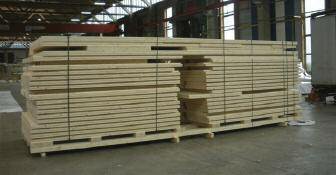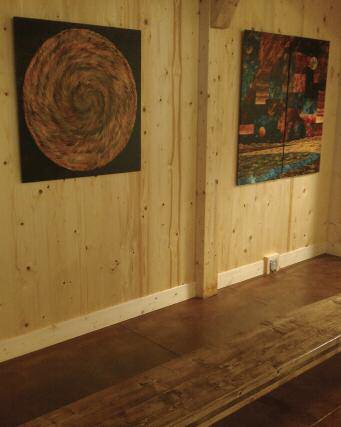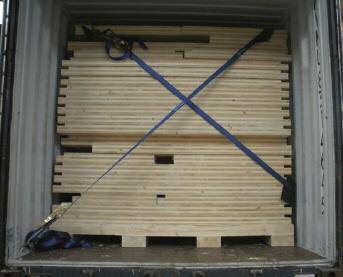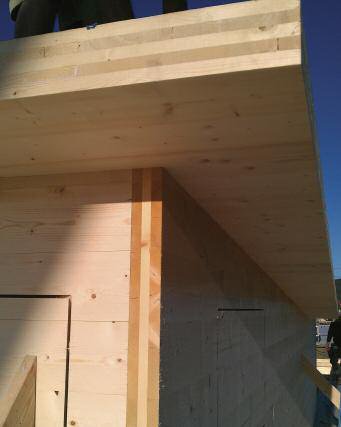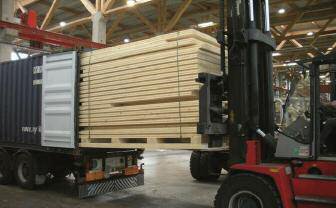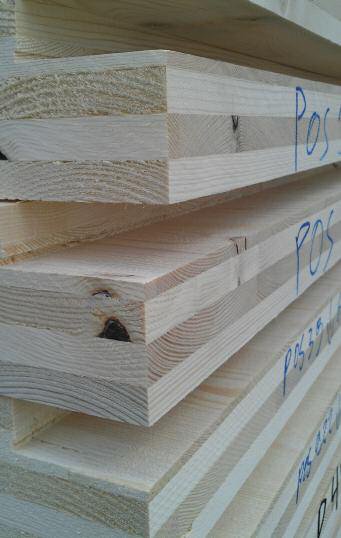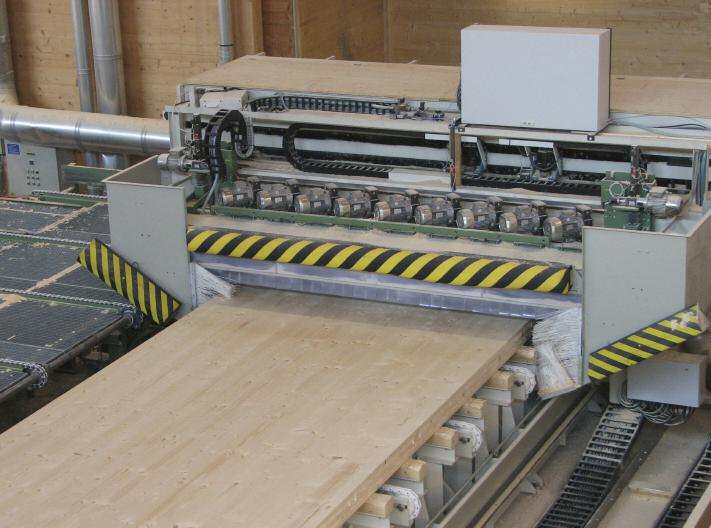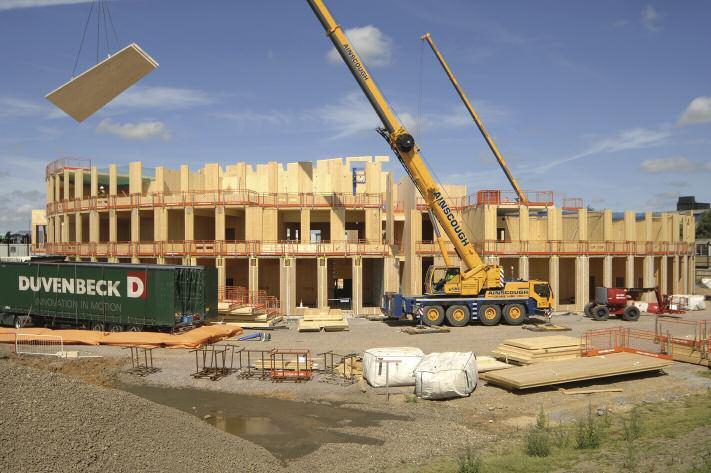Cross laminated timber: The Hulk, green & strong
9 March 2012If it were a comic book character, cross laminated timber (CLT) would be ‘The Hulk’ – massive, strong and, yes, even green, given that it imposes a significantly lighter environmental footprint than either concrete or steel, particularly with respect to greenhouse gas emissions and carbon storage.
But CLT is not fantasy. It is an engineered wood product fast gaining recognition in North America, thanks to initiatives by the Canadian Wood Council, FPInnovations, BC Wood WORKS! and APA - The Engineered Wood Association.
But is it really a panel product? You can be the judge of that when you’ve read this article.
Conceived in the 1970s, the Swiss took a closer look at CLT in the early 90s.
That was followed by a joint initiative between industry and academia in Austria in 1996, which finally gained recognition of CLT as a highly relevant construction material.
Several factors spurred CLT’s entry into the European construction market. Most prominent was the move towards ‘green building’, still a major driver today, together with improved manufacturing efficiencies, code changes and improvements in marketing, promotion and distribution.
Today, there are eight CLT manufacturers in Europe with capacities ranging from 4,000 to 71,000m3. The main concentration is in Austria, which has four plants. Plants are also planned in Sweden, where one is already operating, and in Australia. Recently, Structurlam began producing CLT at its plant in Penticton, BC, and another Canadian manufacturer, Nordic Engineered Wood, also has begun producing CLT at its Chibougamau, Quebec, plant.
While there are no producers yet in the US, there are construction projects already completed, and still others planned, in which CLT has and will play a leading role.
All told, there is around 0.3 million m3 of CLT in place worldwide, with a further 0.6-1.0 million m3 expected to be in place by 2015.
Is there a home for CLT in North America?
According to the Canadian Wood Council (CWC), the answer is an emphatic “yes.In its report Plan to Accelerate Commercialization and Use of CLT in North America, March 2010, CWC states that “Not since the introduction of I-joists, some 40 years ago, has a new wood product generated so much interest”.
That’s a strong statement considering that the past four decades have witnessed the likes of OSB, laminated veneer lumber (LVL) and parallel strand lumber (PSL), among others.
CLT’s intrinsic attributes are sparking a revitalised interest in the use of wood in construction, according to Mr Erol Karacabeyli, PE, manager of building systems at FPInnovations in Vancouver, BC. In a paper he presented at the International Wood Composites Symposium in Seattle, Washington State, Mr Karacabeyli ended his talk on CLT with the view that “We are experiencing a wood renaissance in construction ... and CLT will likely play a role– A powerful statement from an industry expert who has been studying CLT for a decade.
According to Mr Karacabeyli, CLT differs from other engineered wood products like LVL, PSL and glulam in that it is not sawn into headers and beams, but is used in its massive form as a complete wall, floor or roof element. It thus satisfies the needs of growing ranks of modern-day architects looking to exploit the green properties of wooden buildings and the convenience and cost-effectiveness of largesized panels that can be used in tilt-up or similar applications.
In Mr Karacabeyli’s professional view, and in accordance with the research he and his colleagues have undertaken, CLT can compete with concrete and steel in high-end housing, mid- to high-rise residential and commercial structures, and big box buildings in North America. And it is not improbable that we may one day see CLT buildings rise to 20 storeys.
Performance characteristics
In its 2010 publication Cross Laminated Timber: a Primer, Special Publication 52.
FPInnovations lists an impressive array of CLT benefits. Among them:
Rapid construction time: Carpenters aided by cranes achieving outputs of 1,000-8,000ft2/day. Advantages are lower erection costs, faster project turnaround and insurance savings due to fast, safe erection. As the structure is wood based, subsequent trades come to the site sooner and finish faster.
High dimensional stability: Precise properties with minimal perpendicular variations due to humidity and negligible parallel variations. Windows, cladding and drywall can be preinstalled; similarly piping, HVAC and electrics. Improved safety: Most work is done in a controlled environment at the plant where the CLT is made.
Less demand for skilled construction labour: Erection mostly requires carpentry skills and power tools only.
Less waste: Wet trades are eliminated; little waste generated in the erection process.
Less intrusive: Less noise associated with construction; overall time at site is reduced.
The European experience also suggests that CLT provides a sense of ‘solidness,’ with end-users stating that CLT structures have a “substantialfeel – qualities that can be touted in promoting the product.
Seismically, CLT exhibits good energy dissipation due mainly to the mechanical connectors used. Shaking tests on a sevenstorey CLT structure found it capable of sustaining very strong earthquakes.
CLT also exhibits excellent fire-resistance, due to its slow and predictable char rate, although testing did find that the choice of glue used in bonding the product may influence the char rate. And since CLT is a solid member with no concealed spaces, the fire-spread risk is also reduced.
Acoustically, CLT structures may exceed code requirements for floors and walls, provided certain measures are taken such as the installation of a self-supporting suspended ceiling with a layer of insulation.
And thermally, CLT is shown to provide thermal mass to a building, improving efficiencies in heating and cooling – values that are enhanced as the thickness of the material increases.
A complete building system
The European experience also suggests that CLT lends itself to vertical integration, where the producer may provide design and engineering services as well as participating in onsite erection.
CLT’s versatility as a building system lies in the fact that it can be used for all building elements – walls, floors/ceilings – simply by varying the thickness of the panel. It also lends itself to long spans – a seven-ply, nine inch-thick CLT floor can span 25 feet without support and spans to 65 feet are possible using so called ‘folded’ CLT systems.
Installation, too, is relatively uncomplicated. CLT panels are transformed at the plant into building elements, which are numbered and shipped according to an assembly plan. At site, walls are placed on top of a grout bed and foam tape and held in place while ceilings are installed. They are then secured and the next phase of installation begins. This is repeated until all storeys have been installed and the shell is fully erected.
During erection, a tent may be placed over the structure to prevent wetting and to enable work to proceed on multiple shifts. The tent is simply raised as work progresses.
Cladding is required on exterior walls, while interior walls may be dry-walled or finished with a stain or other suitable material.
CLT also lends itself to hybrid construction, where it is a component used together with concrete, masonry and/or steel.
Uncomplicated manufacturing
What sets CLT apart from other wood products is its massiveness, achieved by crosslaminating sawn softwood lumber or planks (2 x 4/6 and 1 x 4/6in). Typically, three to seven layers form the required thickness of CLT, which ranges from 2-20in (20in maximum), or 5-50cm. Panel sizes are from 16-50ft (4.8-15m) long and from 4-10ft (1.2-3m) wide. Stability is achieved by placing every other layer perpendicular to those adjacent to it. The layup is then pressed under heat and pressure, nailed together, or even joined using dowels.
Pressing requires that precise press settings be observed. It is one thing to lose a few sheets of plywood due to a press blow and another matter entirely to lose a single panel that might contain as much as 500ft3 (14m3) of wood!
Getting the product to this point requires adherence to the American Lumber Standard rules for grading and drying.
Depending on the point of installation, final moisture content will be 12 ± 2%. Proper observance of moisture content prevents dimensional variations and limits surface splitting; important when the surface forms the finished interior of a building.
Some CLT is also produced with a core layer of OSB, plywood or LVL.
Interior/exterior polyurethane glues (formaldehyde and solvent free) are typically used, although melamine urea formaldehyde (MUF) and phenol resorcinol formaldehyde (PRF) adhesives can also be used. Adhesive may be applied to all edges and faces or simply on the face only of each layer of lumber at the time of lay-up. After pressing, the panel is planed or sanded.
Quality control is done in-house in accordance with accepted product performance standards for bending/shear strength and delamination. CNC routers cut openings for windows, doors and service channels used for wiring, ducting and connections. Off-cuts may be used for stairs or similar. The panel is stored in dry conditions.
Where CLT is used as a solid wall member, the exterior plies are normally oriented with the direction of grain running parallel to vertical loading. Similarly, the exterior plies of CLT floors and roof systems run parallel to the direction of span.
Twenty years ago, CLT was a novel European wood product with unknown potential. One can only imagine the reaction from ‘those in the know’ when they first saw the product. Were they taken aback by the amount of wood fibre it consumed? Or did they see the qualities for which CLT has come to be appreciated and acknowledged – that its 100% solid wood cross-section is what gives the product its massiveness and strength?
Apparently the latter, since 20 years on we are seeing its introduction in North America and enthusiasm is increasing. Numerous articles have been written about CLT, and FPInnovations recently introduced its CLT Handbook, a comprehensive, peer-reviewed technical source for designers.
In many ways the CLT experience has followed the evolution of LVL, I-joists, PSL and even OSB – all highly regarded wood products. The difference is that each of these substituted for, rather than replaced, existing building systems.
I-joists, for example, substitute for sawn lumber joists, LVL and PSL for sawn lumber in long span applications, while OSB has largely supplanted plywood in sheathing.
Are we to assume, then, that the same fortune awaits CLT in North America?
Probably not, since CLT isn’t destined to be the new floor joist, rather it will be the entire floor. Similarly, CLT won’t be a supporting roof member, but the roof itself. This suggests that CLT may have stricter performance standards imposed upon it than other engineered wood products. Today’s European producers adhere to a proprietary manufacturing approach. European Technical Approval (ETA) reports allow them to make and sell CLT, although there is progress towards developing a European (EN) standard.
In North America, APA-The engineered Wood Association is leading the CLT certification process, having taken up the task in early 2011 after FPInnovations suspended its product standard development effort in favour of APA’s ANSI standard. As an accredited ANSI standards developer, APA is working to put in place national standards which will expedite the acceptance of CLT products in North America.
APA’s draft standard for CLT was recently balloted and is expected to be completed by the end of the year. According to Dr Borjen (“BJ”) Yeh, PE, director of APA’s Technical Services Division, a principal objective of the ANSI/APA PRG 320 standard for CLT will be to provide consistent requirements for all CLT manufacturers and certification agencies. The document is being developed with the intention that it will be adopted in the US and Canada as a harmonised bi-national standard. Supporting this is the fact that 43% of the ANSI Committee voting members are Canadian engineers, manufacturers, associations and researchers.
In developing the PRG 320 standard, Dr Yeh noted that he and his APA colleagues have taken advantage of the wealth of CLT information available from Europe. This has resulted in the certification process for CLT being shorter than is typical for most new wood products.
Dr Yeh points out that the process has also been fast-tracked in response to the considerable support and enthusiasm of the design community, government, regulatory agencies, researchers and manufacturers.
International certification efforts have also been initiated by a working group under ISO Technical Committee (TC) 165 on Timber Structures, to draft an international CLT standard which will harmonise the European and North American standards.
Experts and interested parties from the US, Canada, Europe and Asia are part of the ISO TC 165 working group.
NOTE: This article appeared originally in the autumn 2011 issue of Engineered Wood Journal – a publication of the US-based Engineered Wood Technology Association – and is reproduced with their kind consent.
